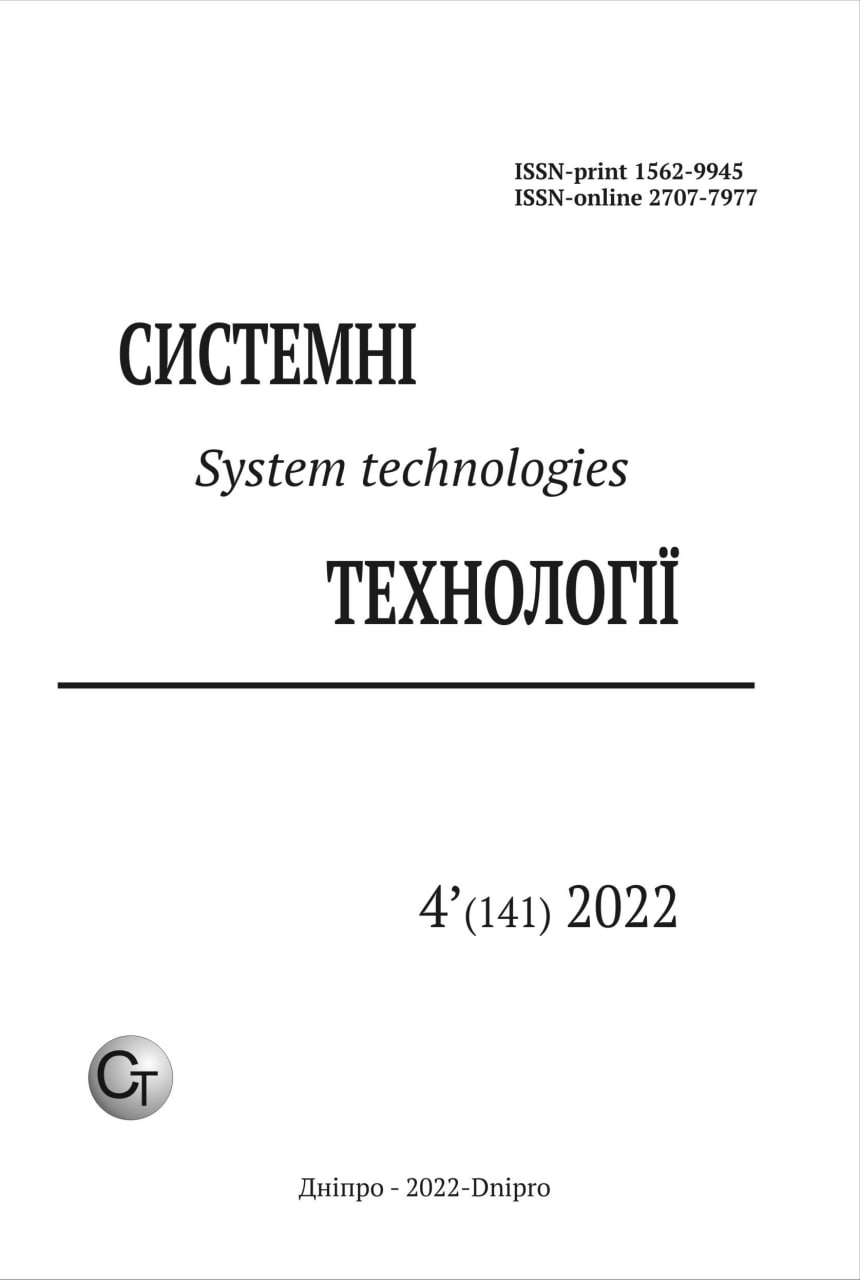Functional dependences between indicators of mechanical properties and tin-aluminum bronze chemical composition
DOI:
https://doi.org/10.34185/1562-9945-4-141-2022-03Keywords:
bronze, mechanical properties, alloying elements, functional dependencies, complex in-dicatorAbstract
Problem statement. Statistically significant relationships establishing between cast tin-aluminum bronze properties, as well as between bronze properties and its chemical composition will predict the level of its mechanical properties when poured into dry sand-sodium-silicate mold. Purpose. Functional relationships determination between mechanical properties of tin-aluminum bronze with tin and aluminum content of up to 6% each. Material and methods. Alloys for investigation have been prepared by melting of technical purity primary charge materials in crucible induction furnace using graphite crucible and charcoal as coating material. Studied alloys mechanical proper-ties have been calculated based on experimental samples tests results during their static expansion and impact bending at room temperature in accordance with actual stand-ards. Alloys chemical composition control has been carried out using precision analyzer EXPERT 4L on samples cut from club-shaped samples. Relationships between mechani-cal properties indicators, as well as mechanical properties and alloys chemical compo-sition have been built using EXEL computer program. Results and discussion. According to Cu-Sn-Al alloys examination results, functional dependences between mechanical properties and Sn and Al content from 1 to 6% by weight of each have been established. This makes it possible to predict mechanical properties level according to chemical composition of such bronze during casting. Conclusions. For the first time, relationships between cast tin-aluminum bronze mechanical properties have been established. This is at the stage of Cu-Sn-Al system bronze designing, with tin and aluminum up to 6% each content, allows predicting its mechanical properties level when pouring bronze in dry sand-sodium-silicate mold.
References
Fizicheskie velichiny: Spravochnik [Physical Quantities: Handbook] / A.P. Babichev, N.A. Babushkina, A.M. Bratkovskij i dr.; pod red. I.S. Grigor'eva, E.Z. Mejlihova. Moskva : Energoatomizdat, 1991. 1232 р. (in Russian).
Metody issledovaniya materialov [Materials research methods] / L.I. Tushinskij, A.V. Plohov, A.O. Tokarev i dr. Moskva : Mir, 2004. 161 р. (in Russian).
Efimenko L.A., Konovalova O.A., Kamardinin V.P. i dr. Ocenka fakticheskih par-ametrov metalla tekhnicheskih ob"ektov neftegazovogo kompleksa. [Estimation of the actual parameters of the metal of technical objects of the oil and gas complex] Himicheskoe i neftegazovoe mashinostroenie [Chemical and oil and gas engineer-ing]. 1999. №4. рр.35-36. (in Russian).
Opredelenie tverdosti po Brinellyu [Determination of Brinell hardness]. URL : https://edu.tltsu.ru/er/book_view.php?book_id=2ba&page_id=1053, (available from: 15.05.2022). (in Russian).
Tylkin M.A. Spravochnik termista remontnoj sluzhby [Thermist's Handbook for Repair Service]. Moskva : Metallurgiya, 1981. 648 р. (in Russian).
Slavskij YU.I., Artem'ev YU.G. Tverdost' stali, kak funkciya ee prochnostnogo i strukturnogo sostoyaniya [The hardness of steel as a function of its strength and structural state]. Zavodskaya laboratoriya [Factory laboratory]. 1989. № 5. рр. 88-91. (in Russian).
Shishkin A.V. Elektrotekhnicheskoe metallovedenie: uchebnoe posobie [Electrotechnical metallurgy: a tutorial]. Novosibirsk : Iz-vo NGTU, 1997. 45 р. (in Russian).
Efimenko L. A., Prygaev A.K. Opredelenie fakticheskih mekhanicheskih svojstv metalla truboprovodov na osnove izmereniya tverdosti : uchebnoe posobie [Deter-mination of the actual mechanical properties of pipeline metal based on hardness measurements: a tutorial]. Moskva : RGU nefti i gaza, 2007. (in Russian).
Zavisimost' mezhdu napryazheniem tekuchesti i predelom prochnosti [Relation-ship between yield stress and tensile strength]. URL : https://metrotest.ru/article/vzaimosvyaz-napryazheniya-tekuchesti-s-tverdostyu-i-predelom-prochnosti (available from: 14.05.2022). (in Russian).
Leonov V.V., Nikiforov A.G., Kovaleva A.A. Vyyavlenie korrelyacionnyh vzai-mosvyazej mezhdu fizicheskimi svojstvami alyuminievyh splavov [Identification of correlation relationships between the physical properties of aluminum alloys]. FUNDAMENTAL RESEARCH. № 7, 2017. рр. 44-48.
Repyah S. I. Temperatura perekhoda iz plastichnogo v uprugoe sostoyanie litogo materiala pri ohlazhdenii v forme [The temperature of the transition from the plas-tic to the elastic state of the cast material during cooling in the mold]. Lit'yo Ukrainy [Casting of Ukraine]. 2015. № 9. рр. 8–13. (in Ukraine).
Repyah S.I. Tekhnologicheskie osnovy lit'ya po vyplavlyaemym modelyam [Tech-nological foundations of investment casting]. Dnepropetrovsk : Lira,2006. 1056 р. (in Ukraine)
ISO 148-1:2016.Metallic materials. – Charpy pendulum impact test – Part 1: Test method. [Third edition 2016-10-15] 2016. 29 рр. (International standard).
DSTU ISO 6892-1:2019 Metalevі materіali. Viprobuvannya na roztyag. Chastina 1. Metod viprobuvannya za kіmnatnoї temperaturi [Metallic materials. Tensile tests. Part 1. Test method at room temperature] (ISO 6892-1:2016, IDT). [Chinnij vіd 2019-11-01]. Derzhspozhivstandart Ukraїni, 2019. 40 р. (in Ukraine).
















